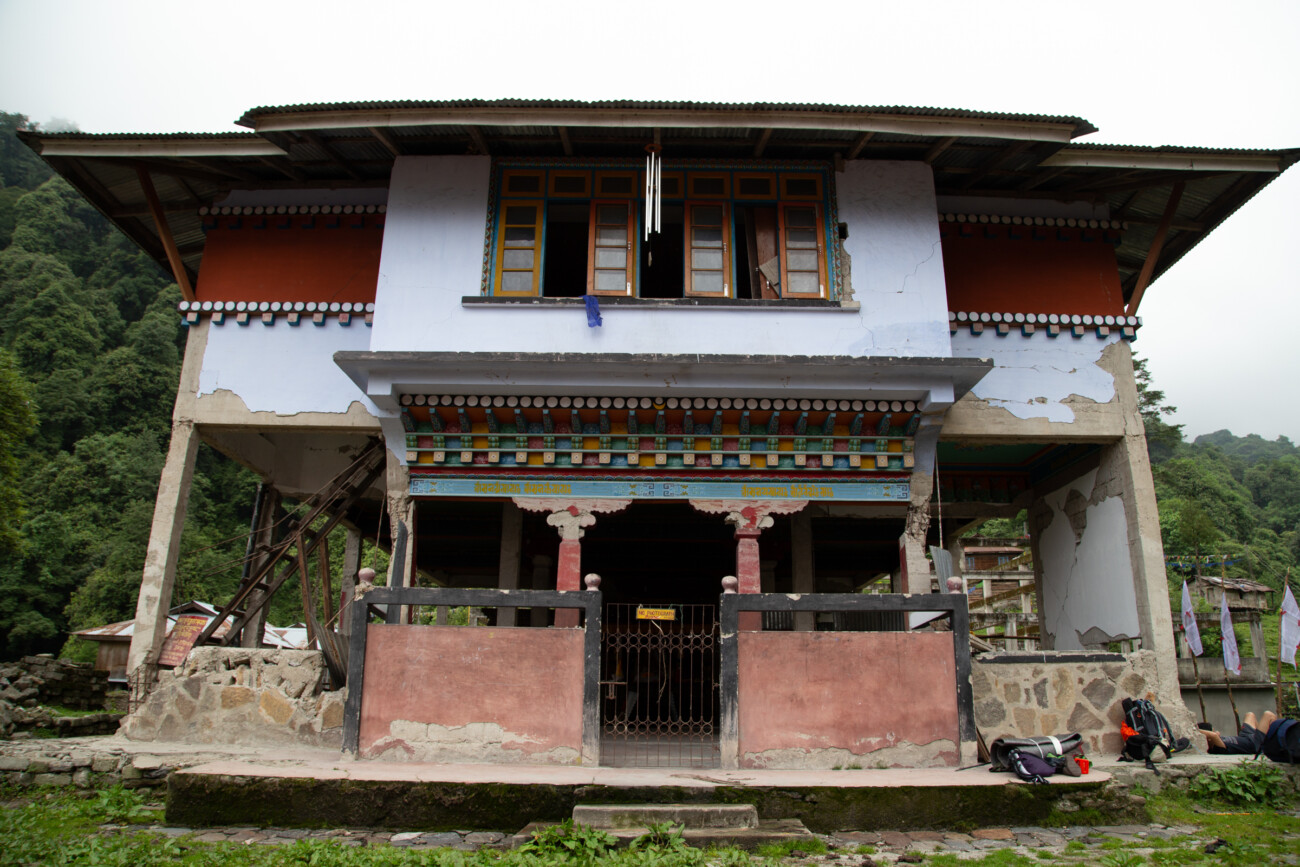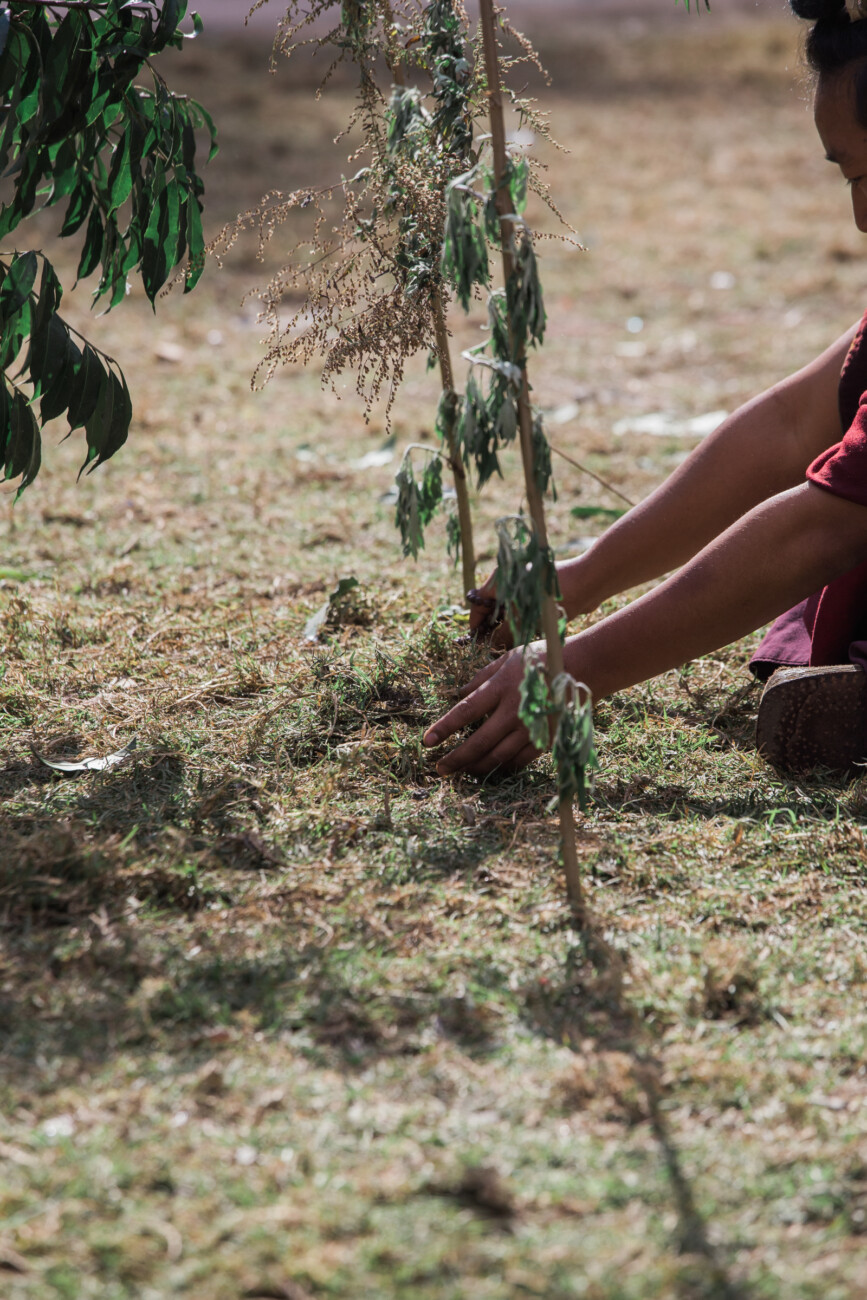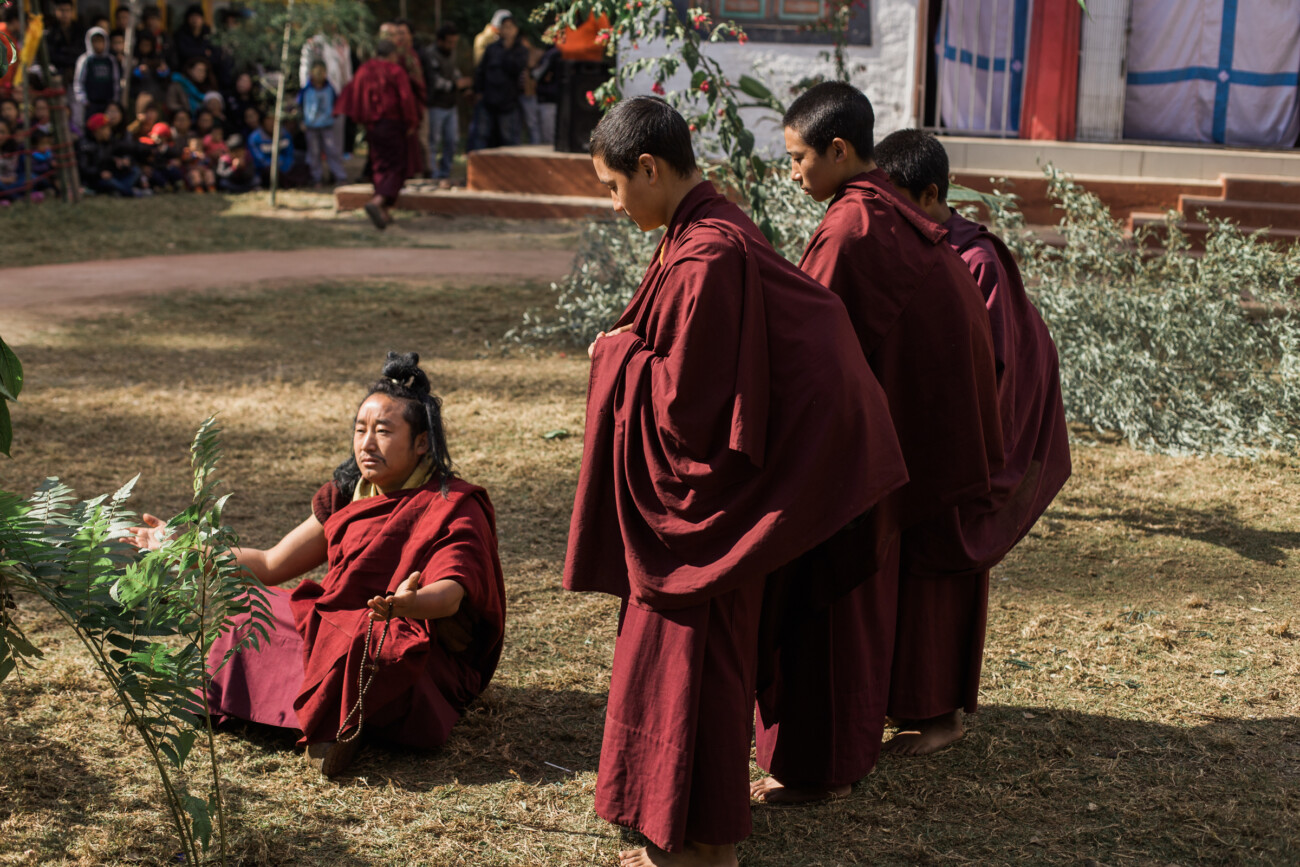Tholung monastery is located in upper Dzongu, in the buffer zone of Khangchendzonga National Park. It is also called Rigdzin Chhodubling and is one of the most revered monasteries in Sikkim. It is here that spiritual relics such as ancient texts, religious objects and belongings of former Lamas and Chogyals are kept. Fearing invasions during the reign of Chogyal Tenzing Namgyal (1769-1793), when the palace was at Rabdentse in West Sikkim, the fifth Lhatsun, Pema Dechen Gyatso, built the Tholung monastery in 1788 and transferred the precious collection from Dubde and Sangag Choling monasteries.
Lhatsun Pema Dechen Gyatso travelled to Tibet where he selected two monks, Tagye Tshampo and Jo Tshongpon, to watch over the treasures. The two briefly settled at Wolung, Nepal, before being redirected to Tholung by Lhatsun Pema Dechen Gyatso. The descendants of these monks continued to look after the relics as curators prior to the 1940s. Thereafter, the Ecclesiastical Department of the Government of Sikkim assumed this responsibility.

In order to remind the people about the significance of the Tholung monastery, they have found novel ways of retelling the story. During the Kamsil ceremony, the story of the origin of the monastery and the establishment of Buddhism in Sikkim is retold in the form of a play.
Tholung’s cold climate and moisture is not suitable for the preservation of the artefacts, which is why every three years these are taken out in the month of April and aired in the sun in a special ceremony called Kamsil. During the ceremony the artefacts are unveiled to the public.

In order to remind the people about the significance of the Tholung monastery, they have found novel ways of retelling the story. During the Kamsil ceremony, the story of the origin of the monastery and the establishment of Buddhism in Sikkim is retold in the form of a play. The narrator recapitulates the story of Lhatsun Pema Dechen Gyatso’s concern about the safety of the treasures, how he went to the Chogyal and advised him of the need to keep them safely away from the invading Gorkha army. When the Chogyal responded that no one would dare touch his possessions, the Lama separated his own treasures and went on a journey to find a safe place for them. He travelled northward passing through great mountains and hills, crossing deep gorges and rivers accompanied by the songs of birds, through dense jungles in search of a safe place to store his treasures.
The Lama had to be reassured that the local guardian deities would accept his request to establish a monastery to keep safe the treasures. He invoked them for positive signs. Before the final acceptance, he first came to a place that evening where he planted his dorjee (a ritual object symbolizing a thunderbolt or indestructibility) in the ground and waited till the morning to find out whether the local deities would accept his request. The next morning, the Lama found the dorjee had been flung out, signifying that he was not welcome there. He proceeded further, crossing many rivers and mountains until he arrived at Tholung where he witnessed the master of the place in celebration, dancing to the sounds of cymbals and drums. But as they approached the master of the land, they were prevented from moving further by the people. When confronted thus, the Lama explained the purpose of his presence which was simply to keep his treasures in a safe place, out of reach of invaders.

Thivong Phisik, a Lepcha, saw the lama burying his dorjee from a distance. He was astonished to see the strangers. He hid himself and observed what the Lama and his team were doing. They, again, waited that night to assess whether the local deities would accept their request.
The next morning, they met and Thivong Phisik was told about the Lama’s search for a secure place. The dorjee still lay buried and was taken as a sign of acceptance. Tivong Phisik allowed him to keep his treasures and even taught him how to survive in the forest, identifying edible plants and roots to sustain them.
Tholung monastery is an important historical landmark where the new religion was accepted by the local deities and the people, and the holy treasures at last found a safe haven.


Art whether it's writing or whatever form it is , they always convey messages of past , of our legacy ,our foundation.
Grateful to read this revealing article 🙏. Thank you n looking forward for more of this ...
Thank you for such an informative article. Finally I now know the timeline and the figures behind it.
Good information but there is more historical information you have to add.